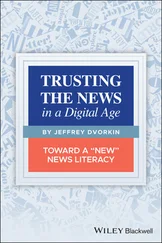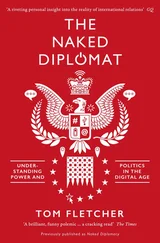Jared Cohen - The New Digital Age
Здесь есть возможность читать онлайн «Jared Cohen - The New Digital Age» весь текст электронной книги совершенно бесплатно (целиком полную версию без сокращений). В некоторых случаях можно слушать аудио, скачать через торрент в формате fb2 и присутствует краткое содержание. Жанр: Старинная литература, на английском языке. Описание произведения, (предисловие) а так же отзывы посетителей доступны на портале библиотеки ЛибКат.
- Название:The New Digital Age
- Автор:
- Жанр:
- Год:неизвестен
- ISBN:нет данных
- Рейтинг книги:5 / 5. Голосов: 1
-
Избранное:Добавить в избранное
- Отзывы:
-
Ваша оценка:
- 100
- 1
- 2
- 3
- 4
- 5
The New Digital Age: краткое содержание, описание и аннотация
Предлагаем к чтению аннотацию, описание, краткое содержание или предисловие (зависит от того, что написал сам автор книги «The New Digital Age»). Если вы не нашли необходимую информацию о книге — напишите в комментариях, мы постараемся отыскать её.
The New Digital Age — читать онлайн бесплатно полную книгу (весь текст) целиком
Ниже представлен текст книги, разбитый по страницам. Система сохранения места последней прочитанной страницы, позволяет с удобством читать онлайн бесплатно книгу «The New Digital Age», без необходимости каждый раз заново искать на чём Вы остановились. Поставьте закладку, и сможете в любой момент перейти на страницу, на которой закончили чтение.
Интервал:
Закладка:
In addition to mitigating the negative consequences of a more connected world, non-state actors will be responsible for generating many of the most promising new ideas that harness these technological changes for the better. In developing countries, aid organizations are already leading the way with innovative pilot projects that capitalize on the growing global connectivity. During the 2011 famine in East Africa, the United States Agency for International Development (USAID) administrator Rajiv Shah reported that his organization was using a mix of mobile money platforms and the traditional “hawala” money-transfer system in Somalia to get past the violent Islamist group al-Shabaab’s ban on aid for affected populations. (The hawala system is an Islamic-world network of trust-based money-transfer agents who operate outside of formal financial institutions.) The high rate of growth of mobile adoption and basic connectivity in the country has forged new opportunities for both the population and those seeking to help. Nonprofit and philanthropic organizations in particular will continue to push the boundaries of technology-driven solutions in the new digital age, well suited as they are to the task, being more flexible than government agencies and more able to absorb risk than businesses.
The fourth category of coping strategy is the personal. Citizens will demonstrate an increased reliance on anonymous peer-to-peer communication methods. In a world with no delete button, peer-to-peer (P2P) networking will become the default mode of operation for anyone looking to operate under or off the radar. Contemporary mobile P2P technologies like Bluetooth allow two physical devices to speak directly to each other rather than having to communicate over the Internet. This is in contrast to P2P file-sharing networks such as BitTorrent, which operate over the Internet. Common to both forms of peer-to-peer technologies is that users connect to each other (acting as both suppliers and receivers) without using a fixed third-party service. For citizens in the future, P2P networking will offer an enticing combination of instant communication and independence from third-party controls or monitoring.
All smart phones today are equipped with some form of peer-to-peer capability, and as the wave of cheap smart phones saturates the emerging markets in the next decade, even more people will be able to take advantage of these increasingly sophisticated tools. Bluetooth is already massively popular in many parts of the developing world because even very basic phones can often use it. In much of West Africa, where mobile adoption has vastly outpaced computer use and Internet growth, many people treat their phones like stereo systems because easy peer-to-peer sharing allows them to store, swap and listen to music entirely through their phones.
Mobile jukeboxes in Mali may be a response to specific infrastructure challenges, but people everywhere will begin to favor P2P networking, some for personal reasons (discomfort with undeletable records) and others for pragmatic ones (secure communications). Citizens in repressive societies already use common P2P communication platforms and encrypted messaging systems like Research in Motion (RIM)’s BlackBerry Messenger (BBM) to interact with less fear of government intrusion, and in the future, new forms of technologies that utilize P2P models will also become available to them.
Today, the discussions around wearable technologies are focused on a luxury market: wristwatches we’ll wear that vibrate or apply a pulse when our alarm clock goes off (of which some versions already exist), earrings that monitor our blood pressure and so on. 8New applications of augmented reality (AR) technology (the superimposing of touch, sound or images from the virtual world over a physical, real-world environment) promise even richer wearable experiences. In April 2012 Google unveiled its own AR prototype called Project Glass—eyeglasses with a built-in display over one eye that can convey information, handle messages through voice command and shoot and record video through its camera—and similar devices from other companies are on the way. In the future, the intersection of wearable technology, AR and peer-to-peer communications will combine sensory data, rich information channels and secure communications to generate exceptionally interesting and useful devices. In a country where religious police or undercover agents roam public areas, for example, good spatial awareness is critical, so a wearable-technology inventor will design a discreet wristwatch that its wearer can use to send a warning pulse to others around him when he spots a regime agent in his vicinity. An entirely new nonverbal language will emerge around sensory data—perhaps two pulses tell you a government agent is nearby, and three will mean “Run.” Using GPS data, the watch would also share the location of its wearer with others, who might be wearing AR glasses that could identify which direction the agent is coming from. All these communications will be peer-to-peer. This makes them more secure and reliable than technologies that depend on being connected to the Internet.
Your device will know things about your surroundings that you have no way of knowing on your own: where people are, who they are and what their virtual profiles contain. Today, users already share their iTunes libraries with strangers over Wi-Fi networks, and in the future, they’ll be able to share much more. In places like Yemen, where socially conservative norms limit many teenagers’ ability to socialize with the opposite sex, young people may elect to hide their personal information on peer-to-peer networks when at home or at the mosque—who knows who could be looking?—but reveal it when in public parks and cafés, and at parties.
Yet P2P technology is a limited replacement for the richness and convenience of the Internet, despite its myriad advantages. We often need stored and searchable records of our activities and communications, particularly if we want to share something or refer to it later. And, unfortunately, not even P2P communications are a perfect shield against infiltration and monitoring. If authorities (or criminal organizations) can identify one side of a conversation they can usually find the other party as well. This is true for messaging, voice-over-Internet-protocol (VoIP) calls—meaning phone calls over the Internet (e.g., Google Voice and Skype) and video chats. Users assume they are safe, but unless the exchange is encrypted, anyone with access to intermediate parts of the network can listen in. For instance, the owner of a Wi-Fi hot spot can listen to any unencrypted conversations of users connected to the hot spot. One of the most insidious forms of cyber attack that P2P users can encounter is known as a “man-in-the-middle” attack, a form of active eavesdropping. In this situation a third-party attacker inserts himself between two participants in a conversation and automatically relays messages between them, without either participant realizing it. This third party acts like an invisible intermediary, having tricked each participant into believing that the attacker is actually the other party of the conversation. So as the conversation occurs (whether through text, voice or video), that third-party attacker can sit back and watch, occasionally siphoning off information and storing it elsewhere. (Or, more maliciously, the attacker could insert false information into the conversation.) Man-in-the-middle attacks occur in all protocols, not just peer-to-peer, yet they seem all the more malicious in P2P communications simply because people using those platforms believe they are secure.
And even the protection that encryption offers isn’t a sure bet, especially given some of the checks that will still exist in the physical realm. In the United States, the FBI and some lawmakers have already hinted at introducing bills that would force communications services like BlackBerry and Skype to comply with wiretap orders from law-enforcement officials, introducing message-interception capabilities or providing keys that enable authorities to unscramble encrypted messages.
Читать дальшеИнтервал:
Закладка:
Похожие книги на «The New Digital Age»
Представляем Вашему вниманию похожие книги на «The New Digital Age» списком для выбора. Мы отобрали схожую по названию и смыслу литературу в надежде предоставить читателям больше вариантов отыскать новые, интересные, ещё непрочитанные произведения.
Обсуждение, отзывы о книге «The New Digital Age» и просто собственные мнения читателей. Оставьте ваши комментарии, напишите, что Вы думаете о произведении, его смысле или главных героях. Укажите что конкретно понравилось, а что нет, и почему Вы так считаете.












